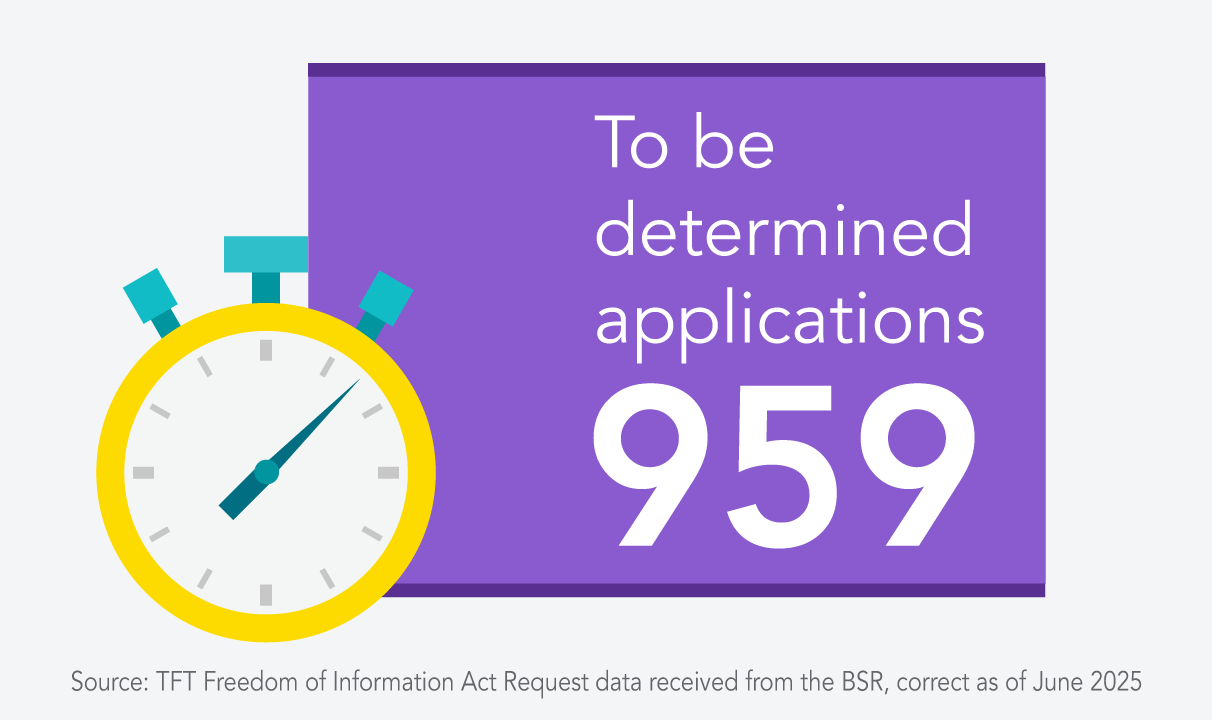Unblocking the BSR: TFT calls for reform to ease Gateway 2 delays
Project leads
Contacts

David Medcraft
David is a Senior Director and heads TFT's national development and project consultancy services. He's responsible for our major project/programme commissions including recently a major recladding programme of works covering 30+ buildings across the UK and our senior living residential portfolio.
David has over 15 years’ experience leading major project and programme management commissions in a number of industries across the UK, notably international nuclear operations and decommissioning programmes, as well as commercial, retail, healthcare, heritage, residential, leisure and infrastructure.


With a huge task on its hands and a high profile in the industry, it’s no surprise that the Building Safety Regulator comes in for scrutiny. Its most pressing challenge is the Gateway 2 process which reviews applications for works on higher risk buildings (HRBs) before they can commence.
Delays are mounting at this juncture, which have exploded the regulator’s initial 12-week review period into a wait that now averages 9 months, per the BSR’s own data. The result is frustration from building owners as their buildings hang in limbo, where works can’t begin and buildings can’t be used.
David Medcraft, Senior Director and Project Management Lead at TFT, wrote for Estates Gazette about our recommendations for shrinking the Regulator's backlog with a combination of reforms at the BSR and better education on how to submit higher quality applications with the right information. You can read that article here (Estates Gazette subscription required).
Why are Gateway 2 delays an issue?
The Building Safety Regulator (BSR) oversees a three-stage approval process for high-risk buildings (HRBs). Gateway 2 is the pre-construction checkpoint, where the BSR assesses whether proposed works meet fire and structural safety standards before giving them approval to proceed.
Unlike Gateway 1 (planning approval), which is handled by local authorities, Gateway 2 (pre-construction approval) and Gateway 3 (pre-occupation approval) are managed solely by the BSR. This has resulted in the Regulator’s capacity for dealing with applications becoming a critical logjam in the approval process. While approvals are pending, most works are left on pause for months. At time of writing (August 2025), the BSR's average wait time was 9 months.
Will Gateway 2 delays get worse?
Since July 2025, an additional complication looks set to exacerbate the existing issues: Housing Associations are now able to access government grant funding to bring their buildings up to required standards. Early government estimates indicate around 1,200 additional social housing buildings (not already in a government fund and with works yet to begin) could now become eligible for CSS funding and will therefore add further pressure to the Gateway processes.
In these conditions, we need action from government with more ambitious plans to improve the BSR’s capacity and processing speed. We also need applicants to understand that they play a role in reducing delays too.
How can we reform the BSR's Gateway 2 process?
The Government has announced an overhaul of the BSR with a new organisational structure to support the delivery of more homes and address remediation more rapidly. It plans to bring ‘…building inspector and engineer capacity directly into the BSR to enhance the processing and review of existing newbuild cases and remediation decisions’. In addition, more than 100 new members of staff are set to be recruited to help enhance operations and reduce delays.
We hope there will be more improvements to come, particularly when it comes to streamlining regulatory workflows, and making the organisation more efficient and better able to uphold the highest levels of safety compliance:
1. Proactive Pre-Application Engagement
Given that the BSR doesn’t currently offer pre-application feedback for all applications, applicants must seek experienced support to help get their submissions right first time. However, early collaboration with the BSR through a structured pre-application consultation phase could significantly reduce delays. By engaging with the BSR before formal submissions, potential issues are identified and addressed early, ensuring applications meet safety requirements from the outset. This minimises time-consuming revisions during formal reviews.
For HRBs over 18 metres, we should prioritise buildings lacking critical safety features, such as sprinklers, evacuation alert systems, or comprehensive building safety cases, particularly those not subject to Regulation 7 during construction. Integrating building safety cases into Gateway 2 submissions provides essential context for cladding and compartmentation works. The introduction of a fee-based pre-application consultation model (similar to that used for planning submissions) would allow Building Regulations Principal Designers to work with the BSR or Class 3 Building Inspectors ensuring a smoother, faster approvals process.
2. Empower Class 3 Building Inspectors
Class 3 Registered Building Inspectors (RBIs) should be empowered to issue conditional approvals for Gateway 2 applications, subject to clear, prescriptive safety requirements. Alternatively, appointing RBIs during RIBA Stages 3/4 as independent reviewers—without design input—ensures consistent oversight throughout the project.
This approach helps to streamline the BSR application process as RBIs can approve submissions based on their prior involvement.
For minor safety works such as fire door installations or minor fire stopping, a fast-track process led by competent fire engineers should be introduced to minimise delays. In addition, establishing a predefined list of works that Class 3 RBIs or accredited Class 2 inspectors can approve without full Gateway 2 submissions would enhance efficiency. Independent certification by registered fire engineers at both the start and completion of these works ensures accountability while accelerating progress.
3. Expand Self-Certification
To ease pressure on the BSR, self-certification for routine maintenance works could be expanded, modelled on established schemes like FENSA (windows), NICEIC (electrical) or Gas Safe (gas installations). Qualified professionals could certify minor remediation tasks—such as fire door replacements or cladding adjustments—without full BSR oversight, freeing up resources for more complex, higher-risk projects.
To maintain safety, self-certification would adhere to strict criteria defining ‘minor’ works, supported by regular audits to ensure compliance. A notification system, where applicants inform the BSR of work commencement and submit a self-certified completion certificate with detailed records, ensures transparency and accountability without prolonged third-party reviews.
Other measures which the Government could consider to improve the efficiency of Gateway 2 and Gateway 3 are:
- Allowing applicants to present Gateway 2/3 applications to the BSR’s multi-disciplinary team (MDT) to clarify complex designs and reduce repetitive queries
- Providing MDTs with access to 3D modelling platforms for complex HRBs to streamline reviews
- Implementing a modern digital platform for application submissions and tracking to enhance transparency and reduce administrative delays
- Developing a ‘materials passport’ system for pre-approved, safety-compliant materials to eliminate redundant testing, saving time and resources
Taking action while we wait for change
The BSR backlog is frustrating, but building owners, investors and housing associations can improve their chances of getting through first time and not needing to repeat the waiting game for a failed or withdrawn application.
If you want help shaping the best possible application for your buildings, we're here to help.
We have been making buildings safer for over 50 years and have worked with the Building Safety Regulator since it was established, on behalf of building owners around the country.






